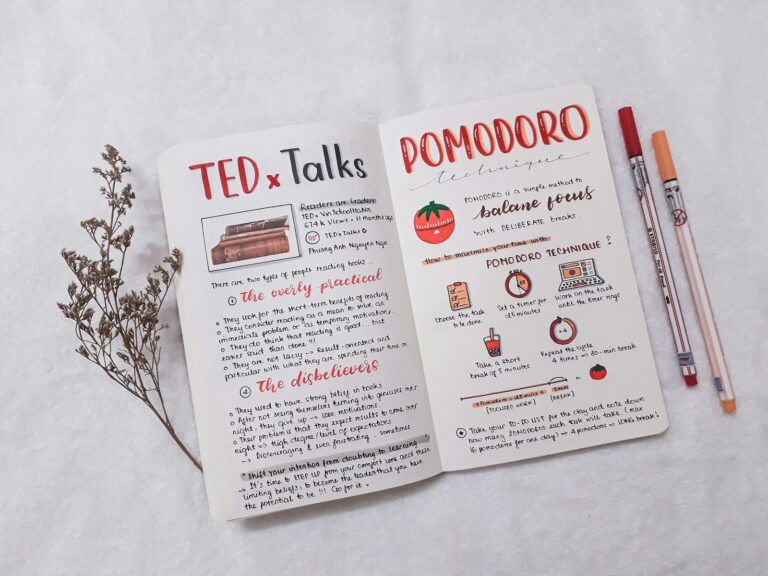The Bullet Journal Method: A Clear and Actionable Summary
The Bullet Journal Method, created by Ryder Carroll, is a popular productivity system that helps individuals organize their lives, prioritize tasks, and track their progress. This method is designed to be clear, straightforward, and actionable, allowing users to customize it to suit their specific needs. In this article, we will provide a comprehensive summary of the Bullet Journal Method, including its key principles, how to get started, and examples of how it can be used effectively.
Key Principles of the Bullet Journal Method
- Rapid Logging: The core of the Bullet Journal Method is rapid logging, which involves using simple bullet points to record tasks, events, and notes. The three basic bullets used are a dot for tasks, a circle for events, and a dash for notes. This allows for quick and efficient note-taking.
- Migration: Migration is the process of reviewing and transferring tasks from one day, week, or month to another. This helps to ensure that important tasks are not forgotten and allows for better prioritization.
- Collections: Collections are thematic lists that help users organize related information. Examples of collections include a monthly habit tracker, a list of books to read, or a brainstorming page for project ideas. Collections can be created as needed and provide a flexible way to manage different aspects of life.
- Index: The index is a key component of the Bullet Journal Method. It serves as a table of contents for easy reference to different sections, collections, and pages within the journal. The index is typically created at the beginning of the journal and updated as new entries are added.
Getting Started with the Bullet Journal Method
To begin using the Bullet Journal Method, you will need a blank notebook and a pen or pencil. Here are the steps to get started:
- Set up your Index: Reserve a few pages at the beginning of your journal for the index. Number each page and create an entry in the index for easy navigation.
- Create your Key: Develop a key that suits your needs. This can include symbols to represent different types of tasks or events, such as a star for important tasks or an exclamation mark for urgent tasks.
- Start Rapid Logging: Begin by logging tasks, events, and notes using the bullet points system. Use short, concise descriptions and add additional details as needed.
- Review and Migrate: Regularly review your entries and migrate tasks that are still relevant to future days, weeks, or months. This helps to ensure that important tasks are not overlooked.
- Create Collections: As you identify different areas of your life that require organization, create collections to manage them. Use clear headings and bullet points to keep information organized and easily accessible.
- Reflect and Adapt: Take time to reflect on your progress, identify areas for improvement, and adapt the system to better suit your needs. The Bullet Journal Method is meant to be flexible and customizable.
Examples of Using the Bullet Journal Method
Here are a few examples of how the Bullet Journal Method can be applied in different areas of life:
- Work: Create a monthly task list to track deadlines and important projects. Use rapid logging to record meeting notes and action items. Use collections to brainstorm ideas or track professional development goals.
- Health and Fitness: Use a habit tracker collection to monitor daily exercise, water intake, or sleep patterns. Create a meal planning collection to stay organized with meal preparation. Use rapid logging to record health-related appointments and goals.
- Personal Growth: Create a gratitude log collection to cultivate a positive mindset. Use rapid logging to record thoughts, ideas, and reflections. Create collections for reading lists, personal goals, or bucket lists.
Remember, the Bullet Journal Method is highly customizable, and you can adapt it to suit your individual needs and preferences. Experiment with different layouts, symbols, and collections to find what works best for you. With consistent practice and regular reflection, the Bullet Journal Method can become a powerful tool for organization and productivity.



